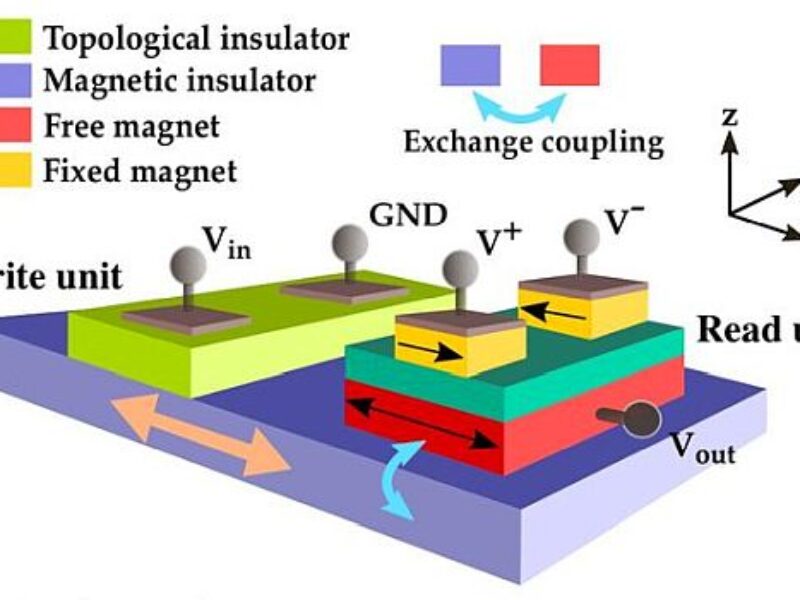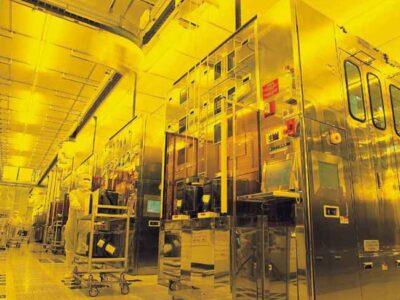
Logic switch uses no electric current for ultralow-energy computing
The method uses a voltage-controlled topological spin switch (vTOPSS) that requires only electric fields, rather than currents, to switch between two Boolean logic states, greatly reducing the heat generated and energy used. Spin can be transported without a charge with the use of a topological insulator – a material whose interior is insulating but that can support the flow of electrons on its surface.
The vTOPSS uses a topological insulator, which has the highest efficiency of conversion of the electric field to spin torque yet observed at room temperature, and a low-moment magnetic insulator that can respond rapidly to a given spin torque. Compared with existing spin-based devices, such as all-spin logic and charge-spin logic devices, the vTOPSS offers 10 to 70 times lower energy dissipation and 70 to 1700 times lower energy-delay product.
The vTOPSS technology, say the researchers, offers competitive metrics compared with existing CMOS technology, and interconnect issues that dominate the performance in CMOS logic are relatively less significant for the vTOPSS, enabling it to switch between two states more effectively.
“Imagine if you were preparing a recipe and had to go into a different room anytime you needed an ingredient before returning to the kitchen to add it,” says Shaloo Rakheja, an assistant professor of electrical and computer engineering at the NYU Tandon School of Engineering. “It’s just as inefficient when the portions of computing hardware needed to do a calculation and the portions needed to store it are not well integrated.”
While heterostructure devices like the vTOPSS, comprising a magnetic insulator and topological insulator, are still slightly slower than silicon transistors, vTOPSS, say the researchers, increases functionality and circuit design possibilities, as it has integrated logic and non-volatile memory. Because vTOPSS will reduce reliance on cloud memory, it also holds the potential for making computing safer, as hackers will have greater difficulty gaining access to a system’s hardware.
The researchers say their next steps will include further optimization at the materials and design level to improve the switching speed, as well as developing prototypes. For more, see “Voltage-Controlled Topological Spin Switch for Ultralow-Energy Computing: Performance Modeling and Benchmarking.”
Related articles:
New quantum materials promise more energy-efficient computing
Intel proposes spin-orbit magnetics for CMOS replacement
Next-gen MRAM structure delivers improved retention, efficiency
Intel: Silicon spin qubits hold promise for quantum computing
 If you enjoyed this article, you will like the following ones: don't miss them by subscribing to :
eeNews on Google News
If you enjoyed this article, you will like the following ones: don't miss them by subscribing to :
eeNews on Google News



